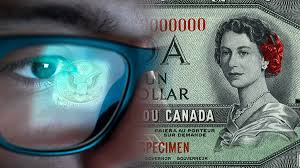You can’t copy money. I don’t mean it’s illegal, that’s obvious, I mean that you physically cannot copy money on a photocopier. This is probably the only thing in the world that your copier will just simply refuse to copy. With pretty much any modern copier, an error message will come up if you put a banknote or something resembling a banknote in the scanner. I’d tell you to try it, but there are so many laws surrounding currency that I’m pretty sure I’d have the police kicking down my door tomorrow if I did.
You can just take my word for it. It’s pretty interesting how money is detected by photocopiers. For almost any major currency, there’s one symbol that tells machines that what they're seeing is money. It’s called the EURion constellation and it looks like this. It was first discovered on the 10 euro note in this cluster of circles, but has since been found on the American dollar, the Swedish krona, the UK pound, and pretty much every other major currency. Most photocopiers will, if they see this pattern of dots, stop printing in an attempt to stop counterfeit. At least, that’s how it used to be. More recently, copiers have moved to a system called the Counterfeit Deterrence System which is incredibly secretive and effective. Nobody is really sure how it works, and while the Eurion constellation might be part of it, these security measures make it even more difficult to copy banknotes.
Adobe photoshop, like most photo editing softwares, has the Counterfeit Deterrence System built in which lets you see just how well it works. Photoshop can of course detect this image of a 10 pound note since it’s Eurion constellations are clearly visable, but then it can also detect it if the area is blacked out. It can even figure out that this tiny almost completely blacked out image is part of a US $20 bill and refuse to edit it. There’s almost no way to make counterfeiting completely impossible, but the point of measures against it is to make it so difficult that the resources that would be used to counterfeit money would be more expensive than the money that could be made. If it’s so difficult to make money that it’s not profitable, nobody will do it.
There’s a ton of different laws relating to the duplication and publication of visuals of currency. The US has 32 pages of laws related to currency. Along with the obvious illegality of counterfeit, it’s also illegal in the US to print or publish any illustration of currency, postage stamps, or revenue stamps of any nation in the world unless, of course, it’s a stamp made under the Migratory Bird Hunting Stamp Act of 1934, and no, that’s not a joke. It’s also illegal to deface currency in any way or to use the image of currency in any advertisement. It is, however, legal to show authentic banknotes in videos and films.
For this reason, in most cases, the money used in movies is real. To legally create prop money, the bill has to be less than 75% or more than 150% of the size of authentic currency, one sided, and must be destroyed immediately after use. Unless they want to do something that’s illegal with money, like burn it or otherwise deface it, filmmakers will often use real money just for simplicity’s sake. Some prop manufacturers will create a stack of blank green paper then top it with one real bill to give the appearance of stacks of currency. Also, one final law that you may not realize related to currency is that private businesses in the US have zero obligation to accept dollars as payment.
Legally, they’re just as allowed to accept galleons. In conclusion, don’t mess around with counterfeit. It will almost never end well.









0 Comments